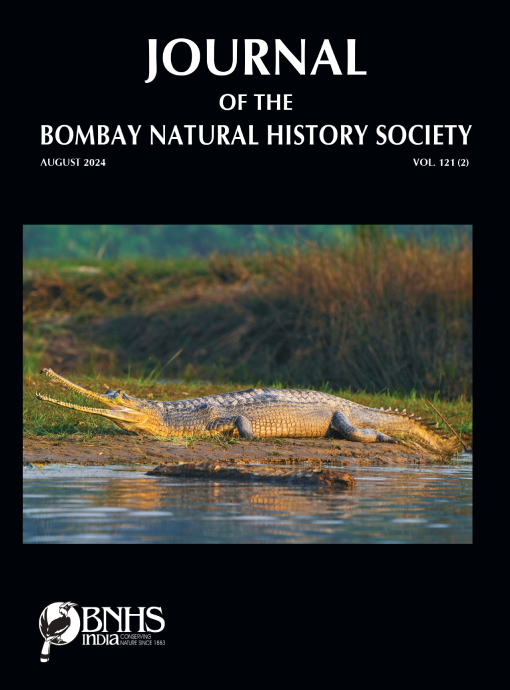Abstract
No Abstract.
References
Anonymous (2022): Epiplema fuscifrons (Warren, 1896). In: Sondhi, S., Y. Sondhi, P. Roy and K. Kunte (Chief Editors). Moths of India, v. 2.92. Indian Foundation for Butterflies. http://www.mothsofindia.org/sp/356155/Epiplema-fuscifrons
Arora, G.S. (1997): Insecta: Lepidoptera: Fauna of Nanda Devi Biosphere Reserve (Uttaranchal). Conservation Area Series, Zoological Survey of India 9: 67–88.
Arora, G.S., D.K. Mandal & M. Chadhury (1977): On scientific result of Swiss Zoological Expedition to India, Part II. Moths of Garhwal District (north-western Himalaya). Newsletter Zoological Survey India 3: 388–395.
Beccaloni, G., M. Scoble, I. Kitching, T. Simonsen, G. Robinson, B. Pitkin, A. Hine & C. Layal (2003): The Global Lepidoptera Names Index (Lepindex). World Wide Web electronic publication. http://www.nhm.ac.uk/entomolgy/lepindex Accessed on August 06, 2024.
Champion, H.G. & S.K. Seth (1968): A Revised Survey of the Forest Types of India. Manager of publications Government of India, Delhi. 404 pp.
Chandra, K., V. Kumar, N. Singh, A. Raha & A.K. Sanyal (2019): Assemblages of Lepidoptera in Indian Himalaya through Long Term Monitoring Plots: 1–457. (Published by the Director, Zool. Surv. India, Kolkata).
Dalla Torre, K.W. (1924): Epiplemidae. Lepidopterorum Catalogus. 30: 1–38.
Dey, P. (2019): High-Altitude Moth (Lepidoptera: Heterocera) Assemblages: Assessing the Diversity and Potential BioIndicator Species in Kedarnath Wildlife Sanctuary, India. pp. 18. https://ruffordorg.s3.amazonaws.com/media/project_ reports/24289-1%20Detailed%20Final%20Report.pdf
Hampson, G.F. (1895): The Fauna of British India including Ceylon and Burma. Moths, Noctuidae (cont.) to Geometridae. Vol. 3. 582 pp.
Haruta, T. (ed.) (1998): Moths of Nepal, part 5. Tinea 15, (Suppl. 1) The Japan Heterocerists Society Tokyo. 311 pp.
Sanyal, A.K., V.P. Uniyal, K. Chandra & M. Bhardwaj (2013): Diversity and indicator species of moth (Lepidoptera: Heterocera) assemblages in different vegetation zones in Gangotri Landscape, Western Himalaya, India. ENVIS Bulletin: Wildlife and Protected Areas (Eds: Uniyal, V.P. & Aseem Srivastava), Vol. 14, Wildlife Institute of India, Dehradun.
Singh, A.P. & Lekhendra (2022): Moths (Lepidoptera: Heterocera) of New Forest Campus, Dehradun, India. Indian Forester 148(6): 632–643. doi: 10.36808/if/2022/v148i6/168225
Sohn, Jae-Cheon & Shen-Horn Yen (2005): A Taxonomic Revision of the Korean Epipleminae (Lepidoptera: Uraniidae), with Phylogenetic Comments on the Involved Genera. Zoological Studies 44(1): 44–70.
Sondhi, Y. & S. Sondhi (2016): A partial checklist of moths (Lepidoptera) of Dehradun, Mussoorie and Devalsari in Garhwal, Uttarakhand, India. Journal of Threatened Taxa 8(5): 8756–8776: http://dx.doi.org/10.11609/jott.2814.8.5.8756-8776.
Smetacek, P. (2005): The Epipleminae (Lepidoptera: Uraniidae) of the Kumaon Himalaya. J. Bombay Nat. Hist. Soc. 102(2): 186–194.
Smetacek, P. (2008): Moths recorded from different elevations in Nainital District, Kumaon Himalaya, India. Bionotes 10: 5–15.
Smetacek, P. (2011): Further Additions to the Moths (Lepidoptera: Heterocera) of Nainital District, Kumaon Himalaya, India. Bionotes 13(4): 140–141.
Uniyal, V.P., P. Dey & A.K. Sanyal (2016): Diversity of moths Lepidoptera: Heterocera and their potential role as a conservation tool in different protected areas of Uttarakhand. Wildlife Institute of India, Dehradun (DST Project Completion Report): 1–117.
Warren, W. (1896): New Species of Drepanulidae, Thyrididae, Uraniidae, Epiplemidae, and Geometridae in the Tring Museum. Novitates Zoologicae 3: 335–419.

